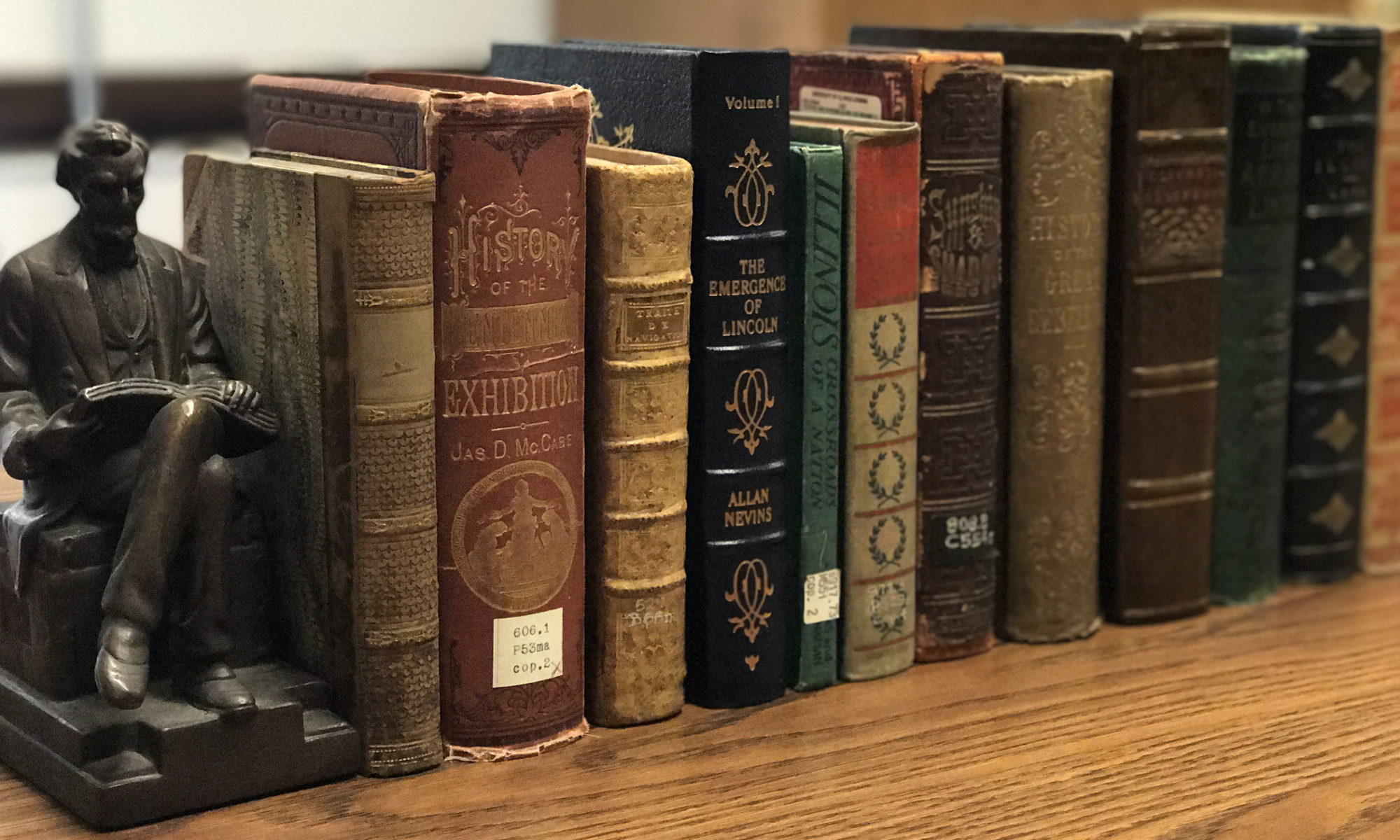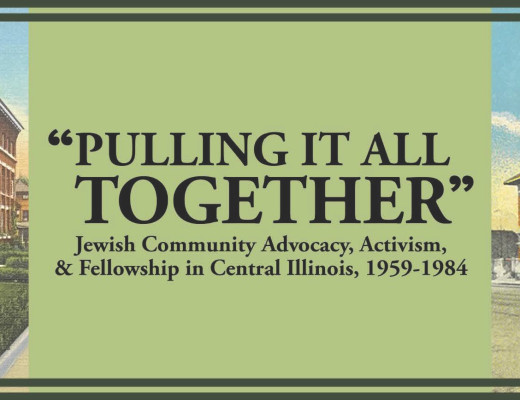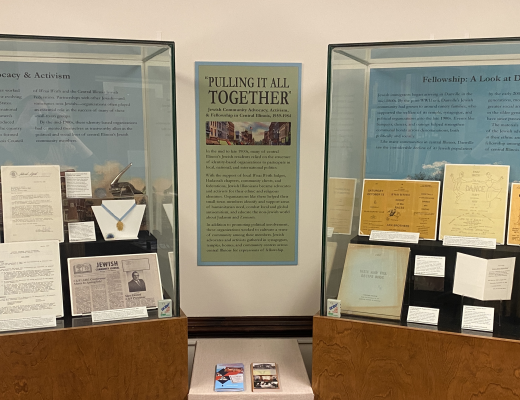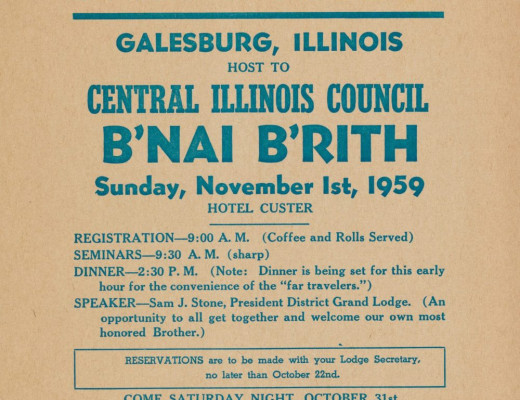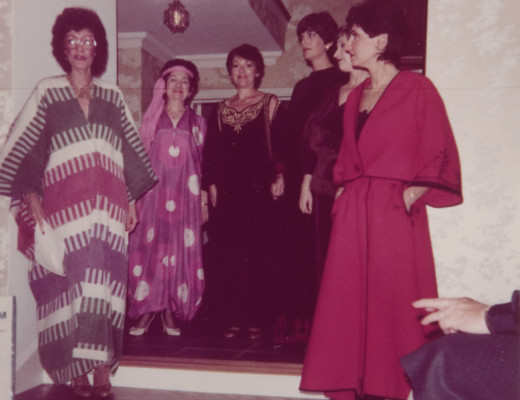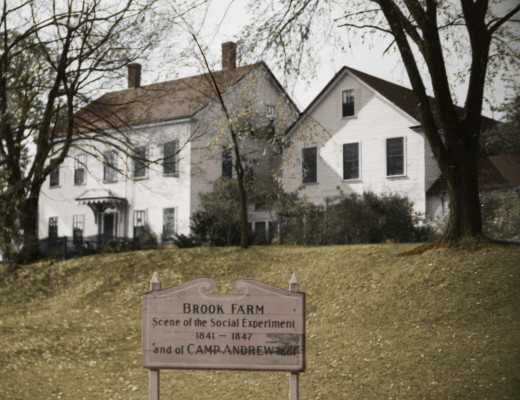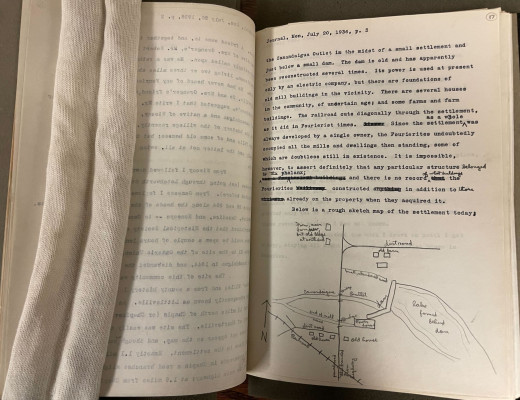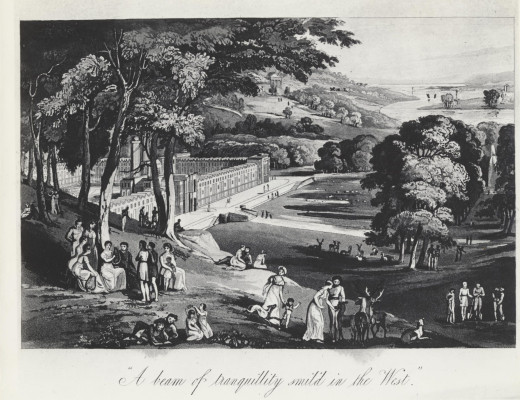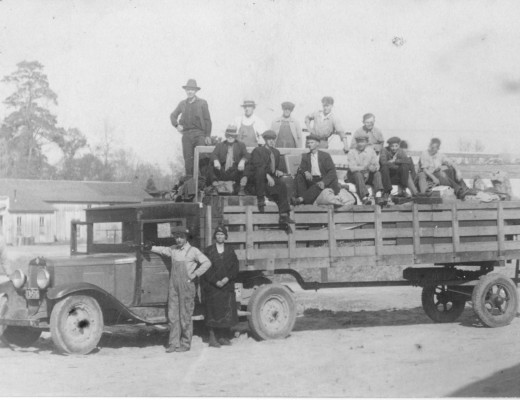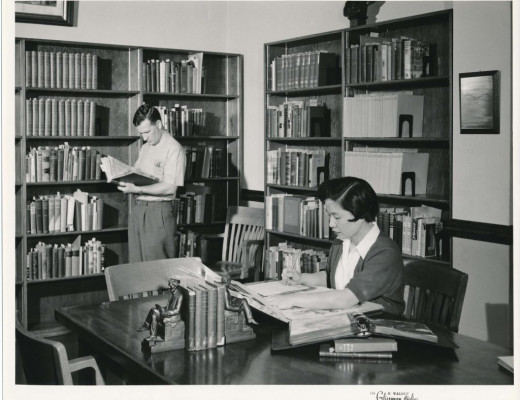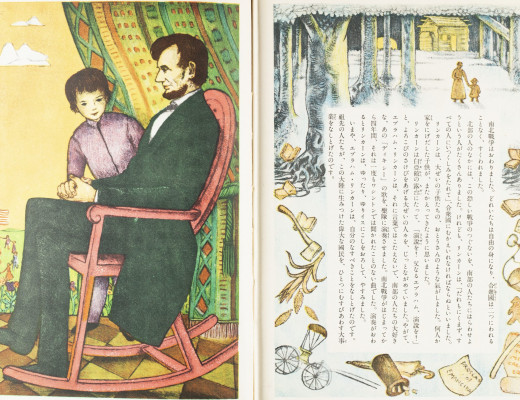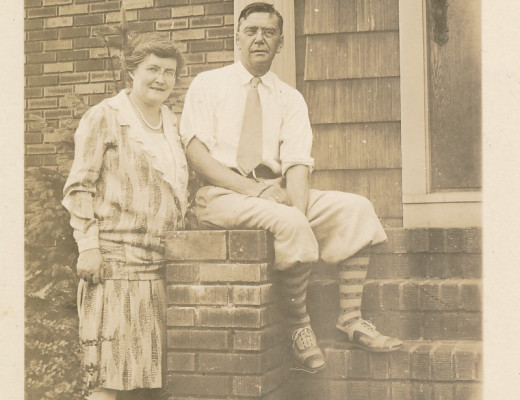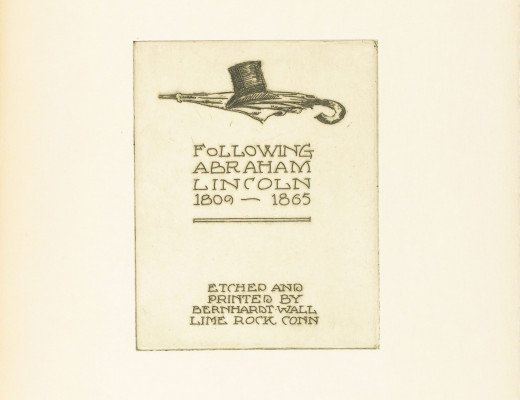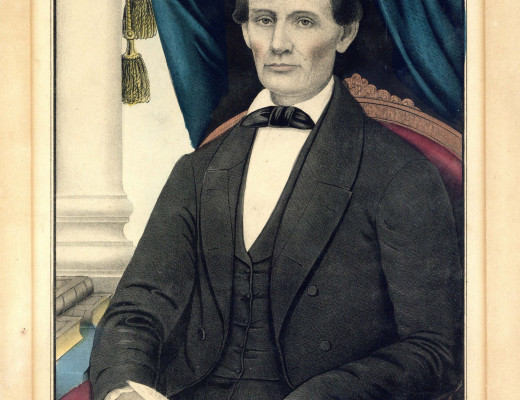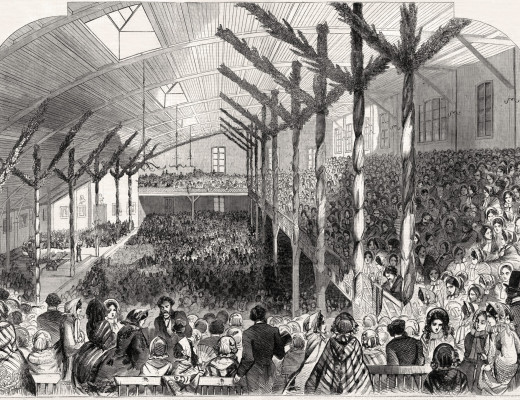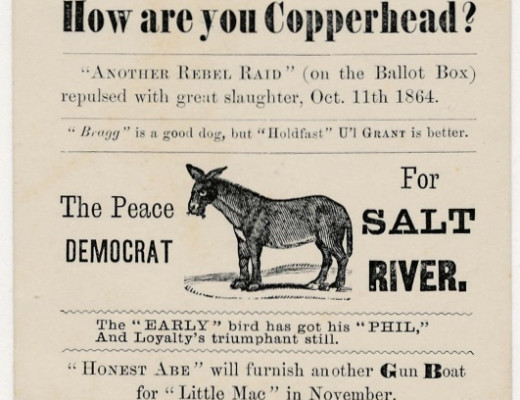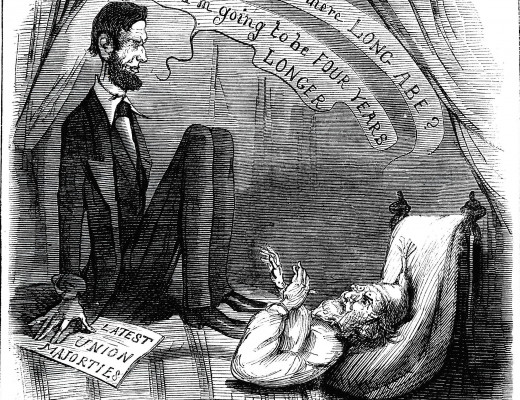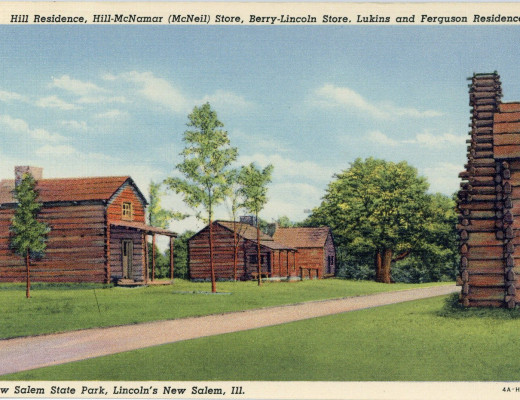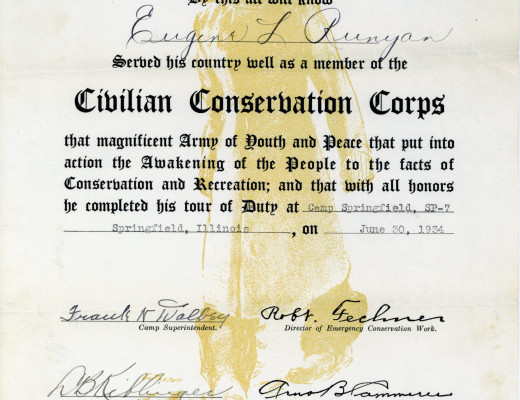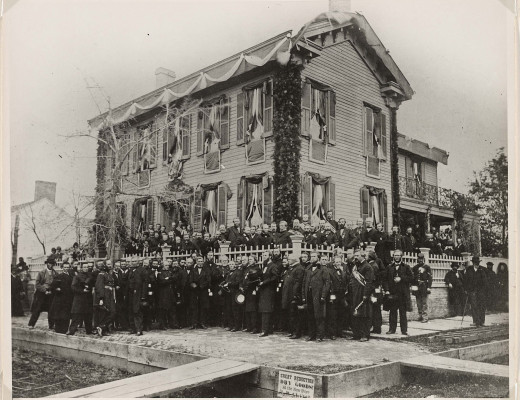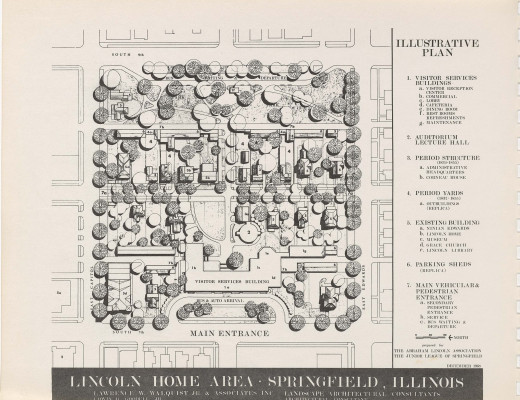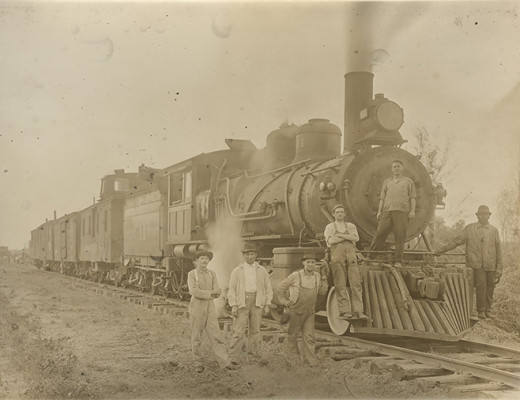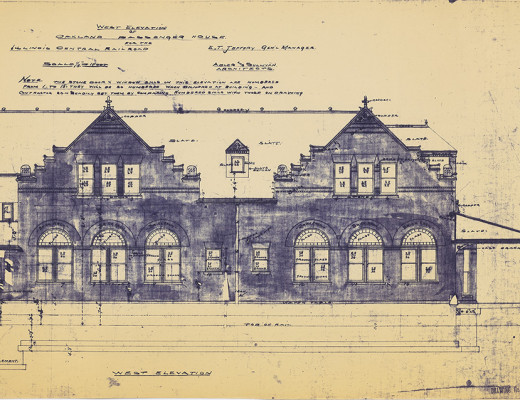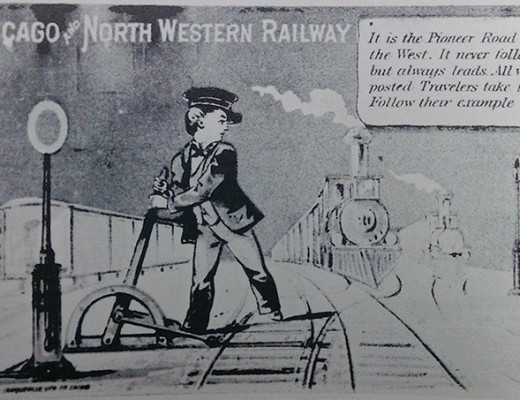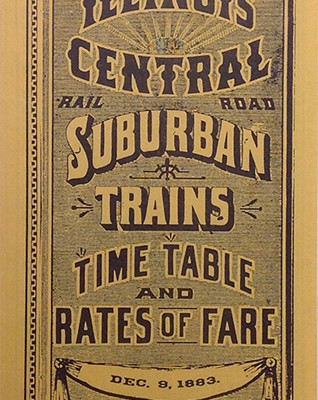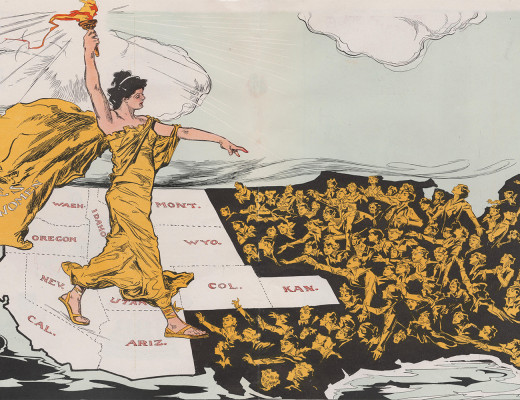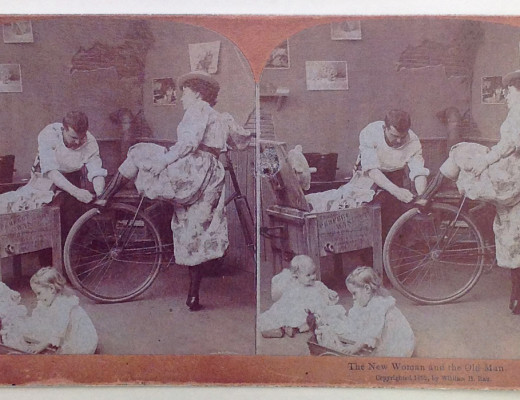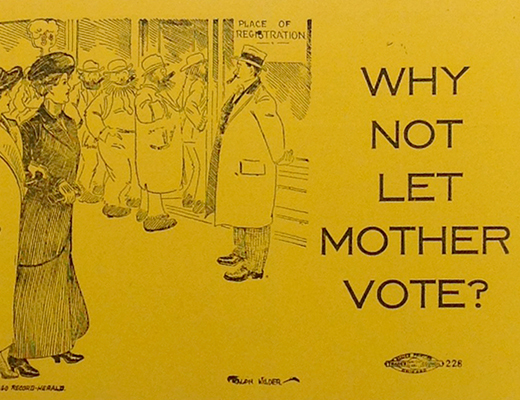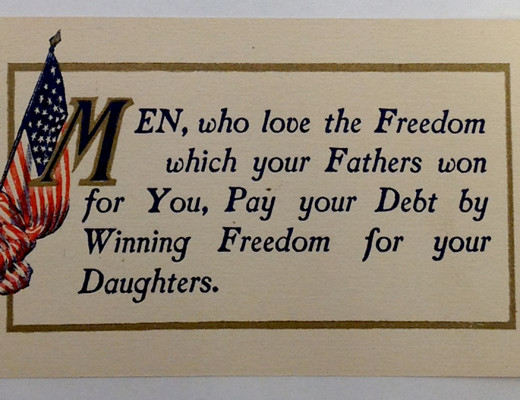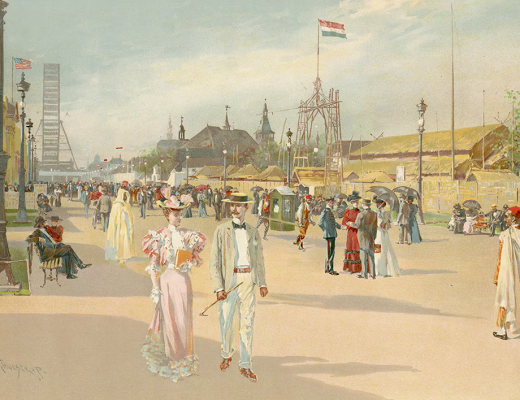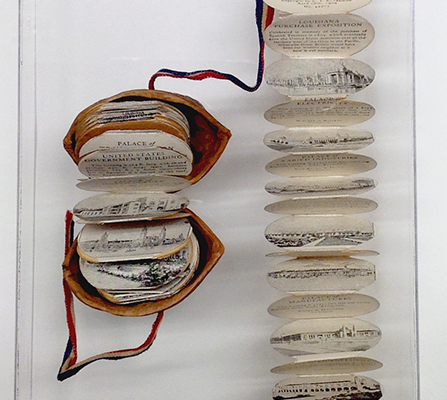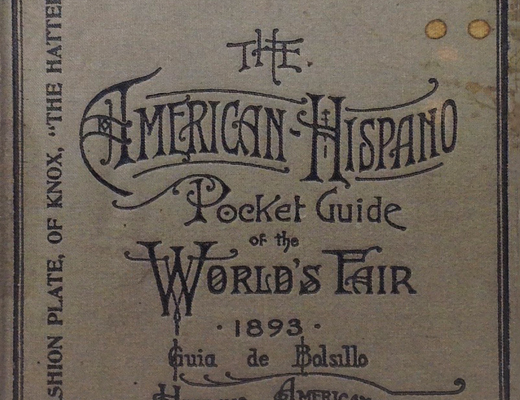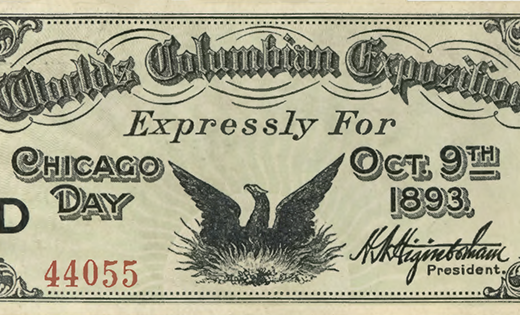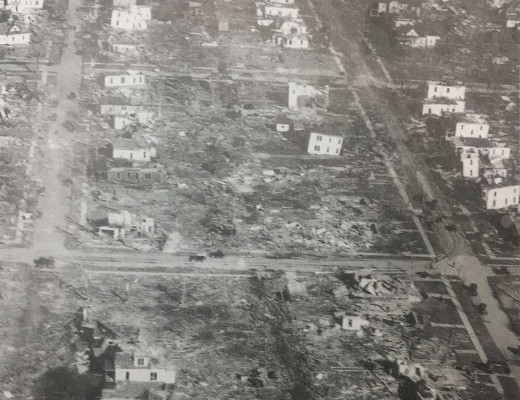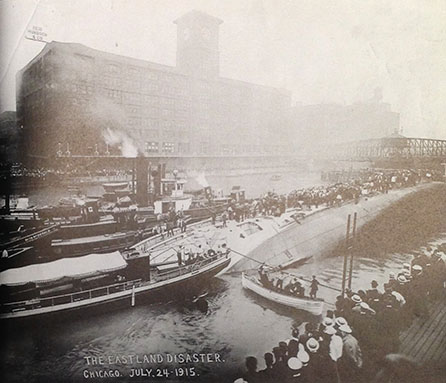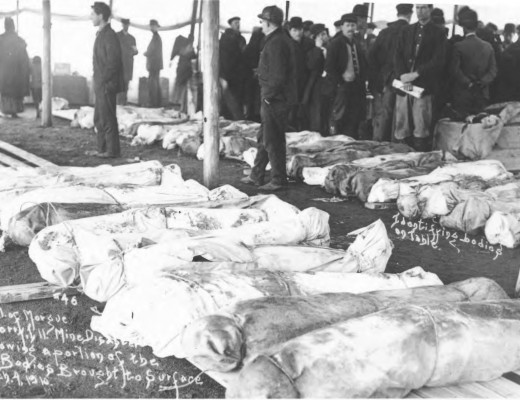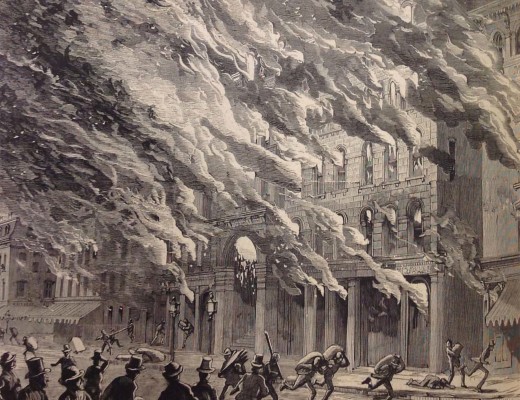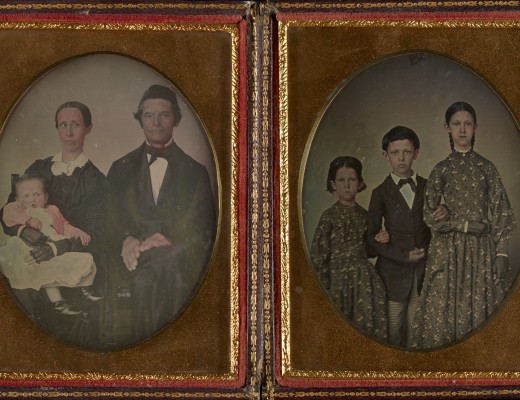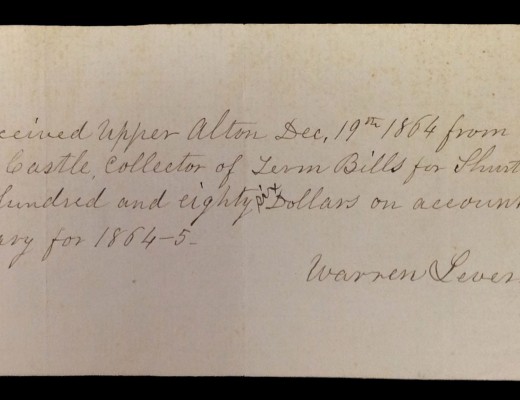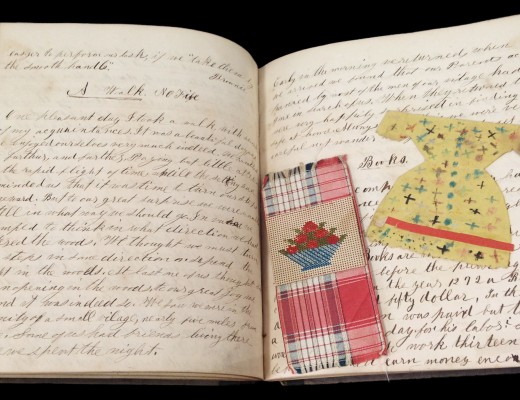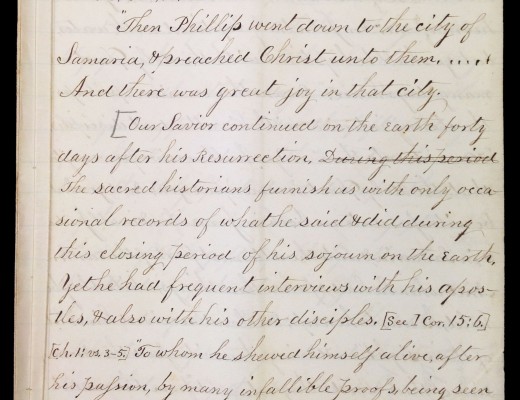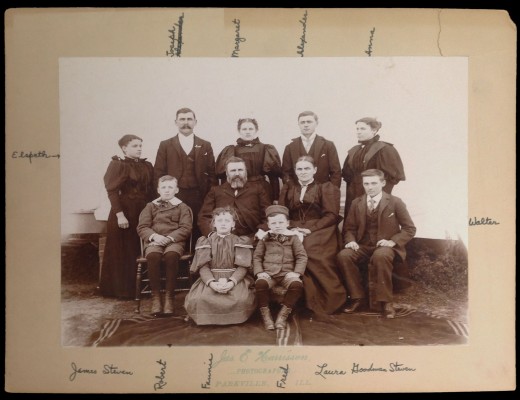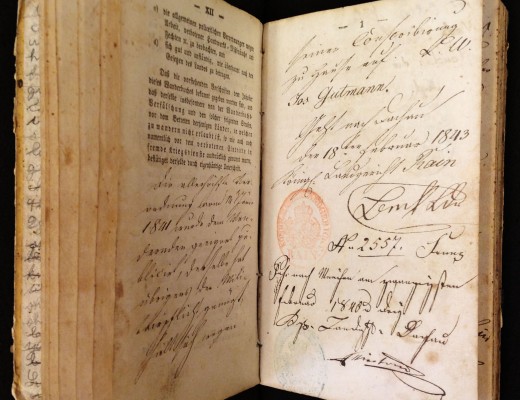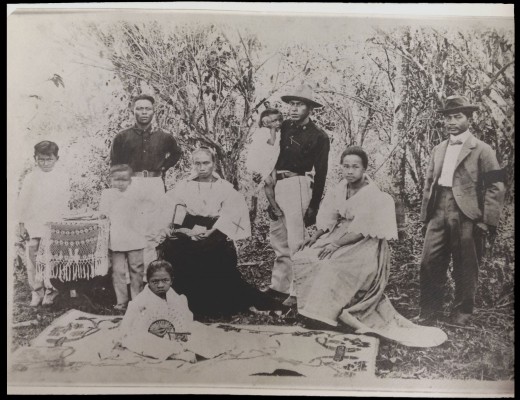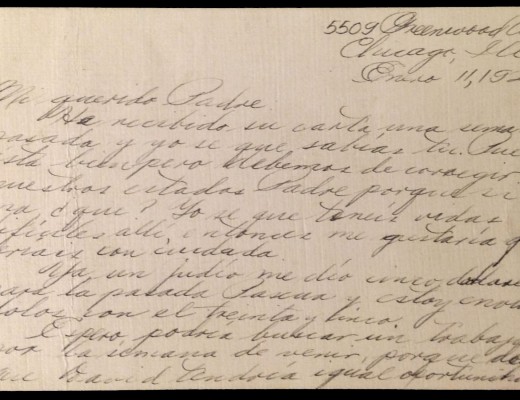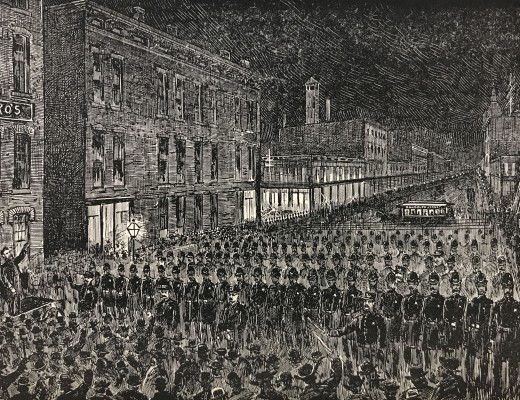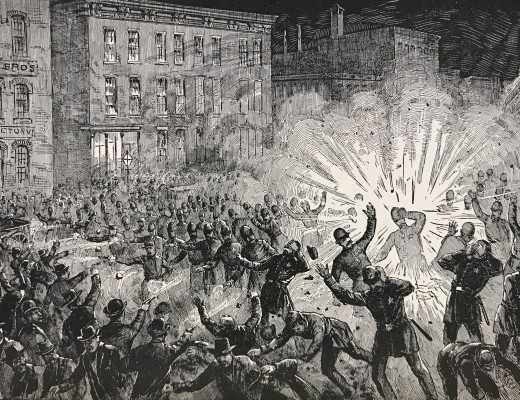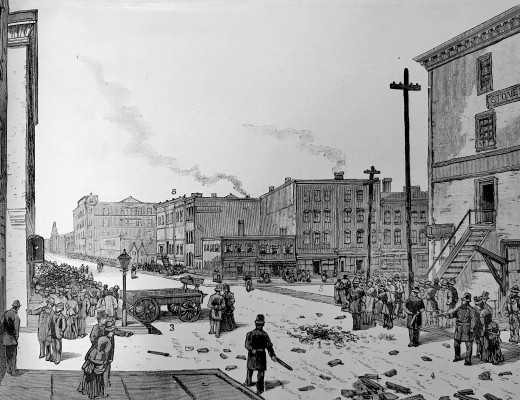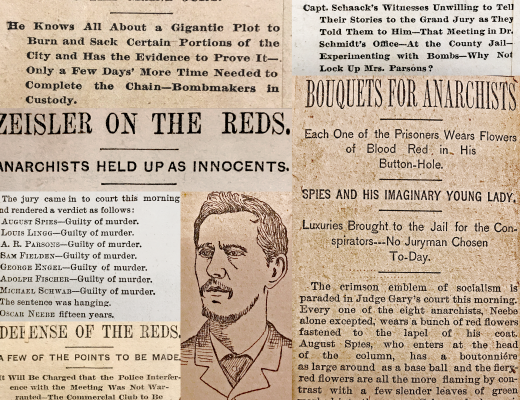Exhibits
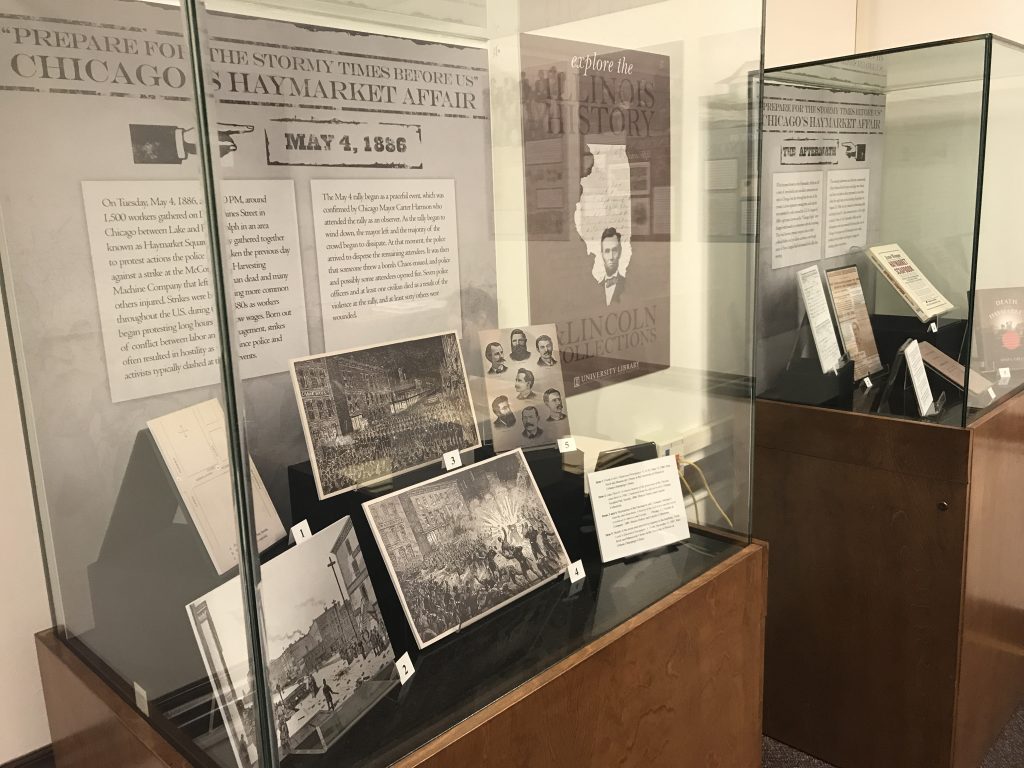
Drawing from a rich array of manuscript collections and print materials, Illinois History and Lincoln Collections organizes multiple exhibits each year. These exhibits highlight noteworthy people, places, stories, and events from our state’s past. We invite you to visit our current exhibit in IHLC’s reading room or to explore and learn more about our previous exhibits below.
Our Newest Digital Exhibit
“Pulling It All Together”: Jewish Community Advocacy, Activism, & Fellowship in Central Illinois, 1959-1984, January-August 2023
Jewish advocates and activists gathered in synagogues, temples, homes, and community centers across central Illinois for expressions of fellowship.
In the mid to late 1900s, many of central Illinois’s Jewish residents relied on the structure of identity-based organizations to participate in local, national, and international politics.
With the support of local B’nai B’rith lodges, Hadassah chapters, community chests, and federations, Jewish Illinoisans became advocates and activists for their ethnic and religious identities.
In addition to promoting political involvement, these organizations worked to cultivate a sense of community among their members.
Past Exhibits
After deinstalling exhibits in the IHLC’s reading room we create digital versions to share online. We’ve also developed some online-only exhibits. Below is a list with clickable links to pages for each corresponding digital exhibit. You may also preview the exhibits in the Preview Digital Exhibits section that follows.
Constructing Utopia: Examining Communitarianism Efforts in America, 1825-1940, March 2022-September 2022
The Lincoln Room at the University of Illinois: 70 Years Since its Inception, November 2021-Ongoing (online only)
The People’s Candidate: Lincoln’s Presidential Elections, October 2020-Ongoing (online only)
“Here I Have Lived”: Recreating the Land of Lincoln, November 2019-February 2020
The Iron Horse of the Prairie State, July-October 2019
Votes for Women, February-July 2019
World’s Fairs of the Midwest, September 2018-February 2019
“I Shall Never Be Able to Forget What I Saw”: A Brief History of Illinois Disasters, June-September 2018
The Leveretts’ Alton: One Family’s Life in Alton, Illinois, February-May 2018
Home: Illinois Immigration Stories, October 2017-January 2018
“Prepare for the Stormy Times Before Us”: Chicago’s Haymarket Affair, August-October 2017
Preview Digital Exhibits:
Jewish advocates and activists gathered in synagogues, temples, homes, and community centers across central Illinois for expressions of fellowship.
In the mid to late 1900s, many of central Illinois’s Jewish residents relied on the structure of identity-based organizations to participate in local, national, and international politics.
With the support of local B’nai B’rith lodges, Hadassah chapters, community chests, and federations, Jewish Illinoisans became advocates and activists for their ethnic and religious identities.
In addition to promoting political involvement, these organizations worked to cultivate a sense of community among their members.
This exhibit explores the communitarian movements of the United States, as well as the research done on them, through the research collections and personal papers available at IHLC.
This travel journal, a mix of handwritten and typed notes, was created during several of Bestor’s research trips taken between September 1932 and March 1949.
“A Beam of Tranquility Smil’d in the West” copy (circa 1950) of book illustration “Mr. Owen Visits America” in Hampden in the Nineteenth Century (1834) by John Minter Morgan.
This postcard is from the Llano Co-operative Colony and pictures workers posing on a truck during a work break.
The Lincoln Room at the University of Illinois Urbana-Champaign was established in 1951 and officially opened in 1953.
Today, its collection is part of the Illinois History and Lincoln Collections, a unit of the Library’s Special Collections Division.
This digital exhibit details the history of the Lincoln Room and features notable volumes acquired in the original donation.
Click the image above to enter our exhibit, “The Lincoln Room at the University of Illinois: 70 Years Since its Inception.”
Abraham Lincoln’s election and re-election to the presidency of the United States took place during times of discord and animosity, with Americans at odds over slavery’s role in the states and territories.
Through print and manuscript items from the Illinois History and Lincoln Collections, this digital exhibit explores Lincoln’s path from nomination to election in 1860 and his re-election in 1864, in the midst of the Civil War.
It offers a glimpse into how presidential campaigns operated during the mid-19th century; while many political customs and processes have evolved over the years, parallels can still be seen in today’s elections.
Click the image above to enter our exhibit, “The People’s Candidate: Lincoln’s Presidential Elections.”
The Illinois History and Lincoln Collections presents an exhibit about the history of Central Illinois’s two most prominent Lincoln heritage sites.
The exhibit features materials related to the reconstruction of Lincoln’s New Salem near Petersburg and the restoration of the Lincoln Home area in Springfield.
It offers a glimpse into how the places Abraham Lincoln called home in the Prairie State have been recreated after decades of changes to the natural and built environments.
Click the image above to enter our exhibit, “‘Here I Have Lived’: Recreating the Land of Lincoln.”
The Illinois History and Lincoln Collections is pleased to present “The Iron Horse of the Prairie State,” an exhibit that explores the evolution of the railroad in Illinois’s history.
The exhibit showcases the IHLC’s holdings related to railroads, from their inception when railroad fever struck Illinois in the 1830s to today.
Exhibit items featured include letters, photographs, books, tickets, souvenirs, and artifacts that span over one hundred years and depict the significant and dynamic roles of the railroad throughout the state’s history.
Click the image above to enter our exhibit, “The Iron Horse of the Prairie State.”
“The Awakening” by Henry Mayer, 1915
Facsimile of The New Woman and the Old Man stereoscopic card, 1892. Jean Thompson Woman’s Suffrage Movement Collection, 1871-2005
(MS 971), Part 1, Folio 7.
Postcard, circa 1910s. Baker-Busey-Dunlap Family Papers, 1866-1933
(MS 830), Box 5, Folder 14.
Click on the image above to enter our exhibit, “Votes for Women.”
Thure de Thulstrup, Watercolor painting of Midway Plaisance, circa 1893. Item 11. World’s Columbian Exposition, Chicago. Watercolors, 1892-1893. Illinois History and Lincoln Collections, uncatalogued.
Case 1: Miniature guide to the Louisiana Purchase Exposition, housed in a walnut shell, 1904.
St. Louis Exposition in a Nutshell. L. I. Silverman, 1904. In the Blair, Leverett, and Stifler Family Papers, 1805-2006 (MS 973). Illinois History and Lincoln Collections.
Case 1: Guidebook for the World’s Columbian Exposition written in English and Spanish, 1893.
The American-Hispano Pocket Guide of the World’s Fair 1893. Guia de Bolsillo Hispano-Americana para la Esposicion Colombina. New York: Haurie-Emes, 1893. Illinois History and Lincoln Collections, call number 606.1 C43Pam.
Click on the image above to enter our exhibit, “World’s Fairs of the Midwest.”
From the Great Chicago Fire in 1871 to the Tri-State Tornado that hit the state in 1925, Illinois history contains many stories of disaster and tragedy.
Explore our exhibit on Illinois disasters to learn about the company picnic outing that became the third deadliest peacetime maritime catastrophe…
…the deadly coal mine catastrophe that drew national attention to issues of mine safety and child labor…
…and more about deadly conflicts, outbreaks, accidents, and natural disasters that mark Illinois’s past. Click on the image above to enter our exhibit, “‘I Shall Never Be Able to Forget What I Saw’: A Brief History of Illinois Disasters.”
In the late 1830s, Mary Ann and Warren Leverett moved from New England to Alton, Illinois. As their family grew to include four children, significant events unfolded all around them in Alton, from the town’s economic growth to its integral involvement in the Civil War.
The Leveretts made a significant impact on their community in Alton. Warren Leverett worked as a professor at Shurtleff College, and Mary Ann served as the Treasurer for the Ladies’ Union Aid Society of Upper Alton, which supported Union soldiers during the Civil War.
In addition to including materials related to several key historic moments in nineteenth-century Alton, the Blair, Leverett, and Stifler Family Papers also includes materials like the diary above that offer an intimate glimpse into the Leverett family’s everyday life in Alton.
Click on the image above to enter our exhibit, “The Leveretts’ Alton: One Family’s Life in Alton, Illinois,” and learn more.
Together, James Steven, Jr., and Laura Gutmann Steven, who wed in 1864, had nine children, pictured with their parents above. James’s and Laura’s families had emigrated to Illinois from Scotland and Prussia, respectively, a decade before they met and married.
This “wanderbuch,” or traveling book, which belonged to Laura’s father Joseph Gutmann, is one of many items in the Illinois History and Lincoln Collections that allows us to trace the story of how the Gutmann and Steven families came together in Illinois.
The Alayu Family Papers also contain a rich assortment of documents, letters, photographs, and ephemera that give us insight into the Alayu family’s experiences in Illinois starting in the 1920s.
While the Gutmann, Steven, and Alayu families all made a home for themselves in Illinois, each family preserved close connections with friends and family abroad. Click the image above to enter our exhibit “Home: Illinois Immigration Stories” and follow these families’ experiences journeying to and settling in Illinois.
On Tuesday, May 4, 1886, at 7:30 PM, around 1,500 workers gathered in Chicago’s Haymarket Square to peacefully protest police actions at a workers’ strike the day before.
Just as the crowd began to disperse on that rainy spring evening, someone detonated a bomb, and what began as a peaceful protest turned violent. Fighting and gunfire broke out between police officers and civilians, resulting in several deaths and many injuries.
Who threw the bomb that sparked the conflict? Who fired shots first: civilians or the police? While the chaos that ensued after the bomb exploded made answering these questions difficult, conflicting theories and accusations would surface following the tragedy.
Click the image above to enter our exhibit “‘Prepare for the Stormy Times Before Us’: Chicago’s Haymarket Affair” and explore the debates surrounding that fateful day in May.
